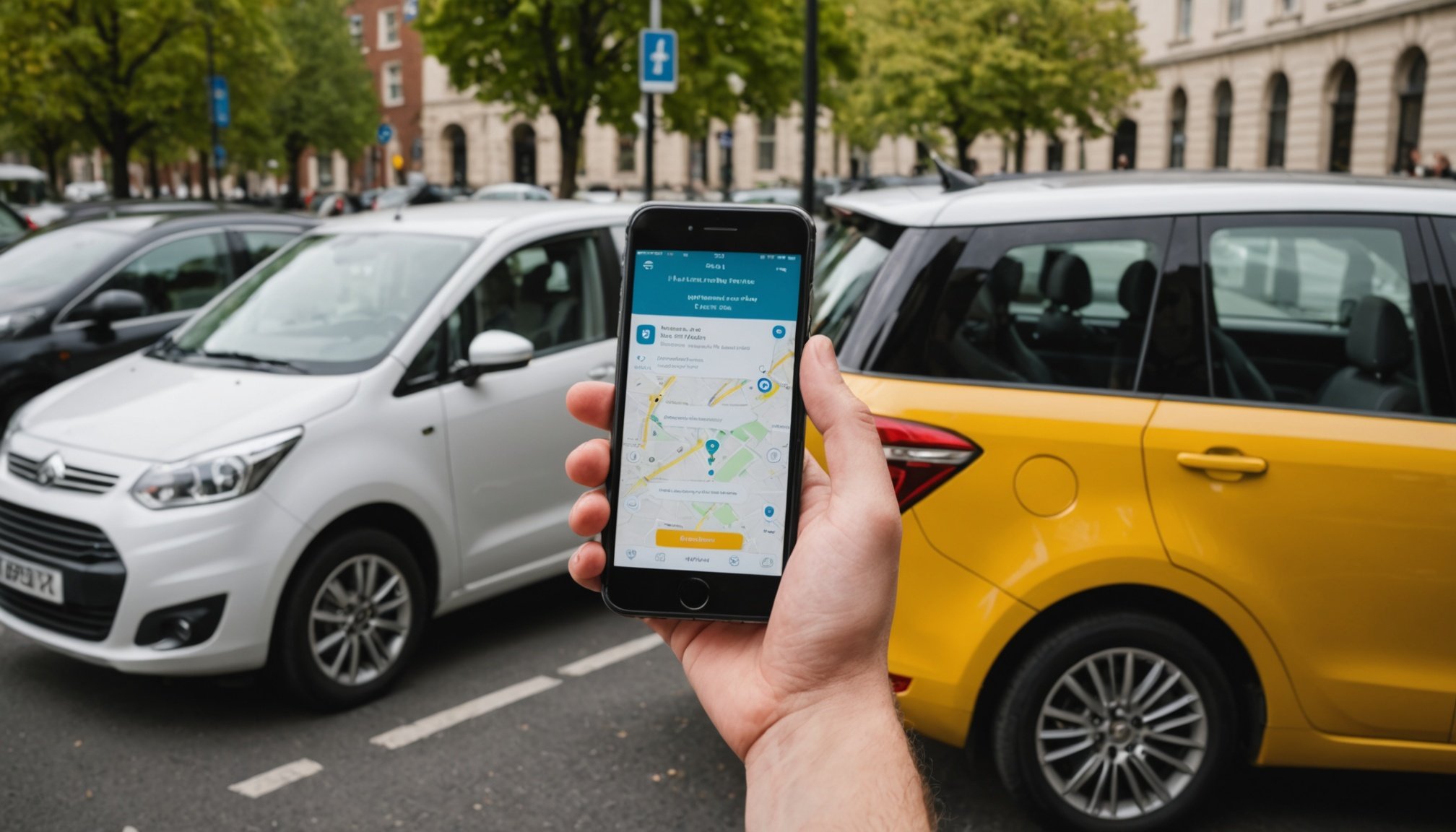Overview of Ride-Sharing in the UK
In recent years, the ride-sharing market in the UK has expanded significantly, transforming urban transportation. This growth provides more convenience and flexibility for consumers. At its core, ride-sharing connects passengers with drivers using a mobile app, offering an accessible alternative to traditional taxis and public transport services.
Key players in this dynamic sector include well-known companies like Uber and Bolt, which dominate the market by providing easy-to-use platforms for both drivers and passengers. These companies are popular throughout major cities, enhancing transportation options significantly.
In the same genre : Ultimate all-weather tires for navigating the uk”s ever-changing climate
Understanding personal vehicle insurance is crucial for drivers participating in ride-sharing. While ride-sharing presents earning opportunities, it also introduces challenges, especially regarding insurance requirements. Drivers must ensure their insurance policies cover business use to comply with UK laws. Failure to do so can result in costly penalties and leave drivers financially exposed in the event of an accident.
In this evolving industry, those engaging in ride-sharing must remain informed. Awareness about insurance terms and conditions is vital. This ensures drivers have adequate coverages, safeguarding them and their businesses. Therefore, insurance comprehension is not merely beneficial; it’s essential for participating responsibly in the UK’s ride-sharing economy.
In parallel : Essential tips for young drivers: finding the ideal car insurance in the uk
Legal Requirements for Ride-Sharing Insurance
Navigating the complexities of UK ride-sharing regulations is essential for drivers to operate legally and avoid costly repercussions. At the heart of these regulations is the requirement for specific insurance coverage tailored to ride-sharing activities. While the terms may vary, understanding the core distinctions between private hire and public hire insurance is crucial.
Differences in Insurance Types
Private hire insurance caters to drivers who pre-book their rides, such as those working for companies like Uber or Bolt. This coverage is mandatory for those offering rides to passengers without being hailed on the street. In contrast, public hire insurance applies to taxis which can be flagged down by passengers. The legal foundation requires that every ride-sharing driver must secure insurance beyond typical personal policies, to encompass the commercial nature of the activity.
Consequences of Inadequate Coverage
Failing to comply with legal insurance requirements can result in severe penalties. Drivers caught without adequate coverage may face fines, licence suspension, or even complete revocation. More importantly, in the event of an accident, inadequate insurance could leave drivers financially vulnerable, unable to cover repair costs or medical expenses. Awareness and adherence to these legal mandates are indispensable for all ride-sharing participants.
Types of Insurance Policies for Ride-Sharing
Understanding the types of ride-sharing insurance policies is essential for anyone considering entering the market. There are several options available, each catering to different needs and offering varying levels of protection.
Private Hire Insurance
Private hire insurance is specifically designed for drivers who pre-book rides through services like Uber and Bolt. This policy ensures that drivers are compliant with legal requirements and provides coverage for potential liabilities during ride-sharing activities. It is a specialised form of car insurance that extends beyond personal use.
Commercial Insurance
This broad coverage option is suitable for drivers who want extensive protection against a range of risks associated with ride-sharing. Commercial insurance policies not only cover damages from accidents but may also include protection against theft, vandalism, and loss of income due to unforeseen circumstances.
Comprehensive Coverage
Comprehensive coverage is an all-encompassing policy offering complete protection for both the driver and the vehicle. It covers third-party damages as well as injuries to the driver and passengers. Despite being more expensive, this type of insurance is recommended for those seeking maximum safety and assurance during their ride-sharing pursuits.
Standard personal auto insurance might fall short because typical policies do not cover commercial use, leaving drivers exposed if passengers are injured or damage occurs during a ride.
Comparing Ride-Sharing Insurance Providers
When evaluating insurance providers for ride-sharing, selecting a policy that offers the best coverage and value can be daunting. The landscape includes various insurance providers known for their tailored offerings, such as AXA and Aviva in the UK. These companies are notable for understandings the unique needs of ride-sharing drivers.
The first step in choosing a provider is to consider factors like cost, comprehensiveness of the policy, and customer service quality. Ensuring that the selected provider has experience in the ride-sharing industry can be beneficial, as they are more likely to offer robust protection against common risks.
A side-by-side analysis of policy coverage is indispensable. Key aspects to compare include excess amounts, the scope of coverage (e.g., theft, collision, personal injury), and any additional features that may be included, such as roadside assistance. Price shouldn’t be the sole deciding factor; instead, the emphasis should rest on the balance between coverage options and affordability.
Ultimately, informed decision-making is essential in securing a comprehensive policy that safeguards against the diverse risks associated with ride-sharing, enabling drivers to operate with confidence.
Selecting the Right Coverage for Ride-Sharing
Navigating the waters of selecting insurance coverage for ride-sharing requires a keen examination of several critical factors. Firstly, consider your driving patterns and how frequently you engage in ride-sharing. High-frequency drivers might benefit from policies with higher limits, while part-timers might find more restrictive, less expensive options suitable.
Understanding the nuances of policy limits and exclusions is pivotal. These terms define the boundaries of what your insurance will cover. Ensure that accidents, third-party damages, and personal injury are not overlooked in your policy.
Practical tips for maximizing insurance benefits include:
- Opting for providers with strong reputations in the ride-sharing sector can prevent future disputes.
- Regularly reviewing your policy ensures it stays aligned with your current driving habits.
- Transparency with your insurer about your ride-sharing involvement is crucial—undeclared activities may void your insurance.
Another key consideration is the regional variation in ride-sharing regulations which could affect your coverage needs. Selecting the right policy is more than scouting for the lowest premium; it’s about finding a balance, ensuring comprehensive protection while catering to personal circumstances.
Effects on Personal Auto Insurance
Engaging in ride-sharing can significantly affect your personal auto insurance. When you use your vehicle for commercial purposes like Uber or Bolt, your standard personal policy might no longer offer adequate protection. This gap can result from typical personal auto insurance not covering commercial use, thus leaving drivers exposed to risks without proper coverage.
Additionally, operating a vehicle for ride-sharing can lead to an increase in insurance premiums. Insurance companies view ride-sharing activities as higher risk due to the increased time the vehicle spends on the road. This risk factor can subsequently lead to higher costs for maintaining coverage.
Disclosing your ride-sharing activities to insurers is crucial. Failure to do so may mean that any claims made during ride-sharing operations could be denied—potentially causing financial difficulties in case of accidents. To avoid this, always ensure that your insurer is aware of your ride-sharing involvement.
For part-time drivers, it’s particularly important to evaluate if your policy adequately supports your activities. Checking policy details can prevent unexpected lapses in coverage, ultimately ensuring you are well-protected whether you’re driving full-time or occasionally. This awareness helps mitigate unnecessary risks and financial burdens associated with ride-sharing.
Frequently Asked Questions About Ride-Sharing Insurance
Ride-sharing in the UK can be complex, leaving many drivers with questions about their insurance needs. How does ride-sharing affect my insurance? Engaging in ride-sharing turns your personal vehicle into a tool for commercial use. This shift typically invalidates standard personal auto insurance during operations, necessitating additional coverage tailored to ride-sharing needs.
Do I need additional coverage? Yes, to ensure comprehensive protection. Typical personal insurance does not cover incidents occurring during commercial activities, increasing the risk of financial exposure. Securing a ride-sharing insurance policy shields against liabilities arising from passenger injuries or vehicle damage during rides.
For part-time drivers, a common query is, What if I drive part-time for ride-sharing? It’s crucial to ascertain that your policy accommodates fluctuating ride-sharing activities. Some insurers offer flexibility for part-timers, adjusting coverage accordingly without voiding your insurance.
Avoid common pitfalls by being transparent with insurers about your ride-sharing involvement. Misrepresentation or omission can lead to policy invalidation and claim denials. Understanding these facets ensures drivers are well-equipped to navigate insurance complexities effectively, reducing risks and safeguarding their endeavours in the ride-sharing landscape.
Case Studies and Real-Life Examples
Exploring ride-sharing insurance case studies and real-life examples provides invaluable insights into the importance of adequate coverage. These narratives often shed light on pitfalls and triumphs in this evolving sector.
Consider the case of a driver whose insurance was insufficient after an accident involving a ride-sharing passenger. The financial burden of covering costly repairs and medical bills without proper insurance was overwhelming, leading to significant debt accumulation. This scenario underlines the critical need for comprehensive coverage in ride-sharing activities.
Conversely, there is an example of effective coverage wherein a driver faced an accident but was promptly compensated due to their meticulously chosen policy. This outcome highlights the benefits of selecting a comprehensive insurance plan tailored to ride-sharing needs. With the right policy, drivers not only safeguard their finances but also ensure peace of mind.
Lessons from these driver experiences emphasise being proactive in understanding insurance policies and their specific coverage provisions. For those navigating the complex landscape of ride-sharing insurance, these narratives act as a cautionary tale underscoring the importance of diligent research and policy comprehension. Drivers who overlook these stories risk encountering preventable financial hardships.











